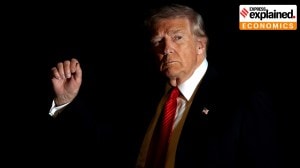India as an energy hot spot
In January this year and mid-last year, this column had alerted its readers to the fact that India is the fourth largest economy of the worl...

In January this year and mid-last year, this column had alerted its readers to the fact that India is the fourth largest economy of the world in purchasing power terms and the G8 have decided to invite us to the high table. We had used John Kirton, the Canadian expert on the G8 who worked in a think tank on a more inclusive G8. Kirton’s numbers have, by now, made it to Page Three in our media, but the issues are still dimly understood.
We had argued then that after Cancun, water and energy would be our handle for agricultural growth. Fortunately, this is that what India stood for at Gleneagles. Also that, while we must pursue our national interest and while our security aspect is paramount, our sustained influence would depend on how well we represent and pursue the interest of the development world. The Chinese, we had noted, had made a fine art of being in the Security Council, but also in the G23, which we had engineered with South Africa and Brazil. One gives you validity, the other space. Both are needed.
Energy is important. From the outside it seems that India did make its point and it was politic of the PM to say that answers are as yet not forthcoming. Trade-able emissions, institutional systems, are all in the right direction, but large countries like China, India, Brazil and Indonesia have growth compulsions. This will also happen when Africa moves.
In the mid-nineties — when it was not very fashionable for economists of my background — I pushed, as minister, the initiatives of US ambassadors, Frank Wisner and Richard Celeste, to initial an over-arching science and technology agreement with the US. The US is a technological superpower and it is silly to ignore that. We must pursue the fast breeder reactor at Kalpakkam — since it is for the first time that we have completed the fuel cycle — but we must also cooperate with the US and others for the lightwater reactors and later developments. Of course energy is just not hardware and systems are important and again there is a lot to learn.
The Americans make an art of generating power from just about anything and we need to master that. The official view that as we reduced tariffs, in the nineties, corruption went down is naive. To begin with as the FAO has shown the OECD countries have dirty tarrification in agriculture as also in textiles and so on and no one said they were corrupt on that count. Also as some very good studies by experts have shown, infrastructure policies in the nineties were invitations for both inefficiency and large-scale corruption. The so-called fast-track policies were an example and we are still trying to get out of Enron. One of the achievements of the UPA government is a strategic view on sourcing energy for India. Regional grids, availability tariffs, LRMC pricing and global technological views are of the essence.
Our real problem is to start with the user and to build our energy economics and rules upwards and there the action is at home, but the world is not unimportant. Every serious energy model in the world has shown that India and China will be energy hot spots and tying up energy technologies, systems and resources is of the highest priority. This will mean strategic intervention by the state. Hopefully we will do it in a manner that babudom is kept to the minimum, but the notion that the free market alone will take care of all our problems is naive at best.
The oil companies have to be large part of our energy strategy. They cannot be allowed to be the only ones to set it. In our opening innings at the G8, we seemed to have done well to have done well in building bridges in the fractured global debate. President Putin is holding the next meeting and we can hold him to task for saying last year that “India and China are huge countries, whose potential is growing energetically and intensively”, which probably made more sense in the original Russian.
On agriculture, India is now recognised on its own merits. An authoritative volume on the new structures emerging in the global regime, edited by Jon English, Andy Cooper and Ramesh Thakur, recognises that “only leaders can mandate the crafting of domestic policy packages to compensate those disadvantaged by agricultural trade liberalisation in developing countries”. To me is attributed the thought that “Cancun failed not because the issues were intractable, but because the world did not recognise that the East Asian crises sent the global agricultural economy in a spin.”
India is forcing the pace. The G33 at Delhi accepted our view that there must be a watchdog to avoid tailspins in the future. The Planning Commission has placed before us very succinctly the dilemmas we are in. The answers we find will reverberate globally.


- 01
- 02
- 03
- 04
- 05





























